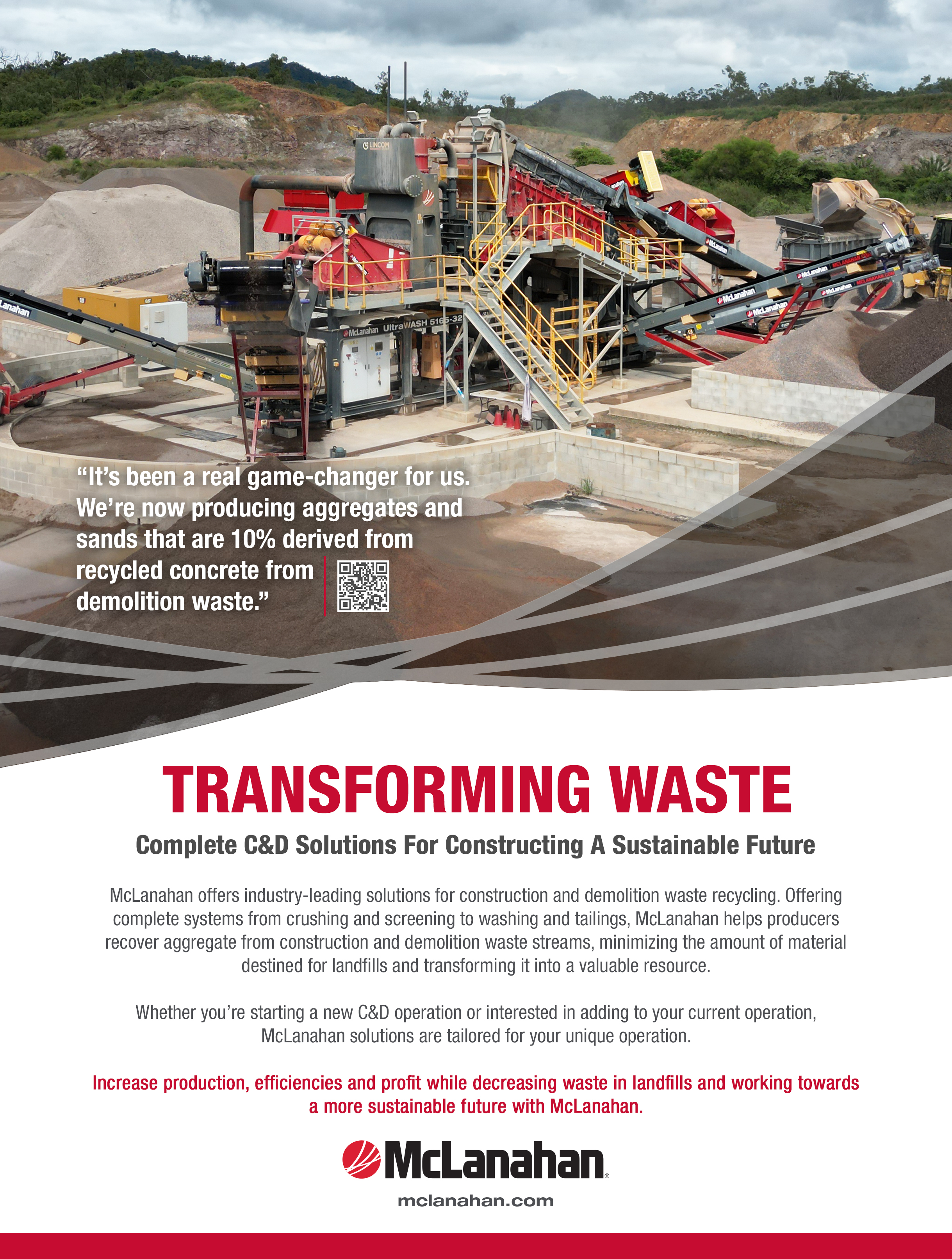
Neil Mullan
Director of Sales
C&D Recycling
McClanahan
1. What should be the driving factor for starting a C&D recycling wet-processing operation?
When initiating a construction and demolition (C&D) recycling wet-processing business, which uses water to separate and clean materials, it’s essential not to solely focus on sustainability as the primary motivator. While sustainability is undoubtedly important, it’s essential to first understand the market demand and what it will take to become profitable. This involves analyzing the costs associated with collecting, sorting, cleaning, processing and selling recycled materials against the revenue generated. If the costs outweigh the revenue, the business will struggle regardless of its sustainability goals.
2. How does the market you’re in affect your C&D recycling operation?
Large or growing metropolitan markets are characterized by having higher demand for construction aggregate as well as generating large amounts of construction and demolition waste. Some markets are also characterized by having low supply of natural aggregate. These markets benefit from C&D recycling operations due to their ability to meet that demand for construction aggregate with a sustainable model, as well as minimizing waste going to landfill.
From a legislative point of view, each market will make its own set of rules for governance of C&D recycling operations. Getting new permit applications or amendments to applications processed can take several months if not years.
It’s essential to identify which materials are in demand in the local market, who the potential customers are and what price they are willing to pay. Research local landfill tipping fees and set your tipping fee accordingly. Don’t set the price higher than the landfill tipping fee or you won’t receive sufficient feed material. However, setting the price too low may encourage some customers to deliver undesirable feed material with excessive levels of fines, which will create a bottleneck in the tailings management system.
3. What should you look for when selecting a location for your C&D recycling operation?
Consider establishing your C&D recycling facility in an urban location that is close to a large customer base. This minimizes transportation costs to and from your customers. Find a location that has adequate space for storage of different incoming feed materials. Typically, more space is required for incoming feed materials than for washed stockpiles, as incoming materials should be quarantined.
4. What factors should you take into consideration when designing a C&D system?
Utilizing innovative technologies and efficient processes is essential. Design a system diverse enough to handle a variety of tough feed materials that, given their nature, are partly characterized by having large swings in size distribution between coarse and fine aggregate.
Once the system is operational, it’s important to understand what kind of a yield to expect in terms of the quantity and quality of each type of feed material. One way to do that is by processing material streams in campaigns. That way the system can run predictably and consistently and measurements can be taken.
5. Why is the quality and consistency of the input material important to your output material?
Unless the source of the material is singular and guaranteed, it is normal for 4 mm size particles of asphalt, concrete, brick and other materials of similar density to come out with 4 mm sand particles and rock fragments in the finished sand product. To minimize variability in the production of high-quality sand, it is key to wash a homogenous blend. Ensuring a consistent quality of materials used in concrete applications requires expertise and collaboration between concrete technologists, mixing masters, material planners and the aggregate recyclers. However, keep in mind the ideal feed material for concrete recipes may or may not exist at the right dollar amount because the recycling facility is dependent on its customer base, rather than a mineral reserve.


Explore the July/August 2024 Issue
Check out more from this issue and find your next story to read.